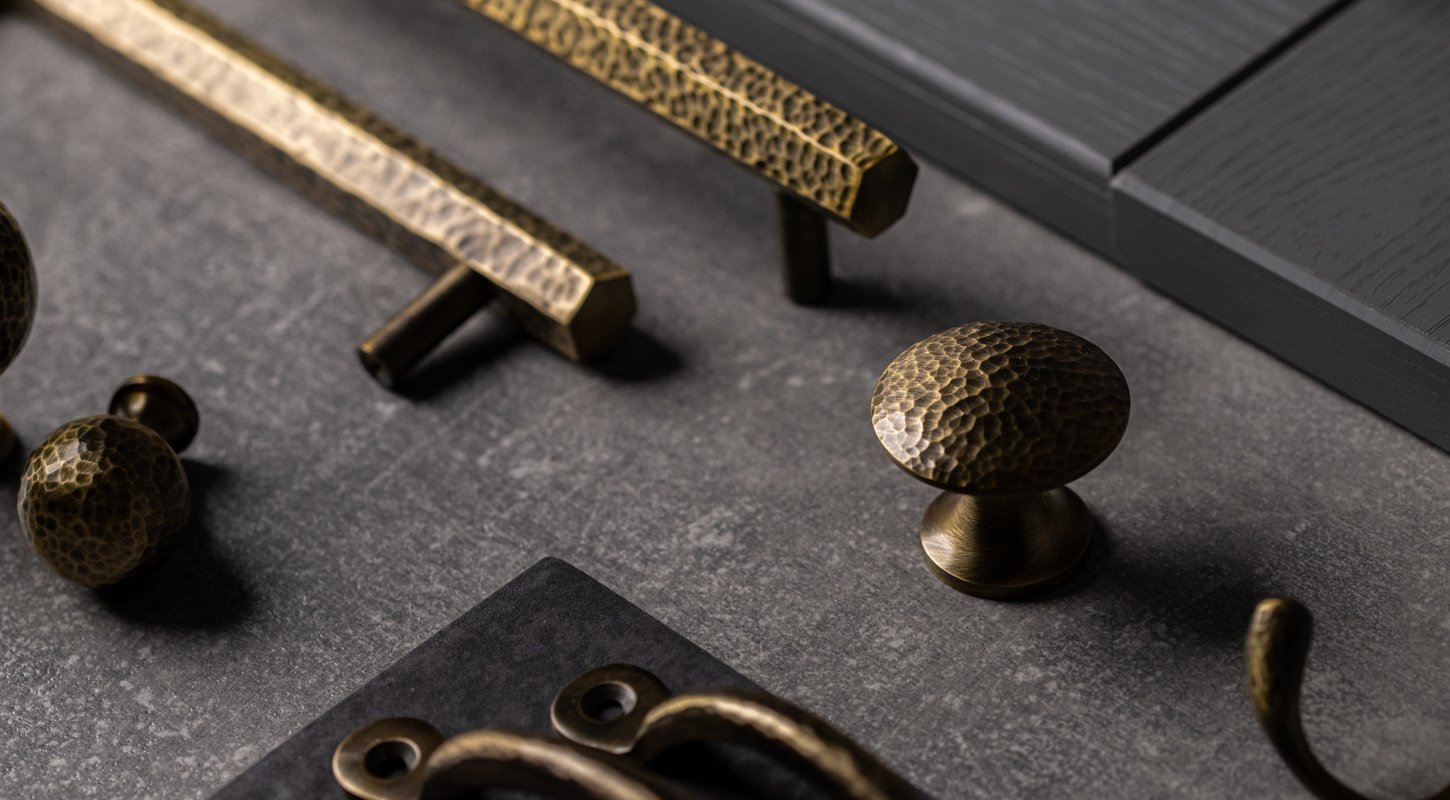Where to Fit a Rim Lock
Table of Contents
- Introduction
- Where to Fit a Rim Lock
- Do rim locks go on the inside or outside
- Are Rim Locks Reversible
- Where would you use a rim lock
- Conclusion
Introduction
Whether you're a homeowner pondering the next phase of your home improvement project or a curious DIY enthusiast keen on getting into the nitty-gritty of locks and security, you've likely come across the term 'rim lock'. If you're wondering where to fit a rim lock, how to discern if it can be used on external doors, which side of the door it needs to be fitted, whether they are reversible, and the ideal applications for a rim lock, then you've just stumbled upon the perfect read.

Rim locks, with their characteristic vintage charm and practicality, have been in existence since the 14th century. While they may seem quaint and a little antiquated compared to modern flush locks, their application in contemporary settings is widespread, proving their functionality and reliability. However, proper installation is key to reaping their full benefits.
In this comprehensive guide, we will expertly navigate you through the essentials of rim lock placement, answering all your burning questions, and offering insightful tips to optimise security and aesthetic appeal. By the end, you'll have an in-depth understanding of where to use a rim lock and the knowledge to implement it flawlessly.
Where to Fit a Rim Lock
1: Understanding the Basics of Rim Lock Placement
It's essential to familiarise ourselves with their unique characteristics and historical origins. These vital components will provide a solid foundation for understanding where to fit a rim lock appropriately.
Unlike sash locks, which are built into the door's structure, rim locks are a surface-mounted locking and catching system. This distinction hails from a time when construction and security methods were significantly different from the ones we're familiar with today. Before the advent of morticed in sash locks, dead bolts, and tubular latches, rim locks reigned supreme in providing security and ease of use. Their design, which is inherently versatile, has allowed them to withstand the test of time and remain a popular choice even in the modern era.
One of the unique characteristics of rim locks is their relationship with door knobs. When paired, they work together to enhance the door's overall aesthetic. But what makes their installation distinctive? Here's the catch: the rim lock body is only visible from one side of the door – the side that opens towards you. From this perspective, you can observe the entire lock system and door knob mounted on the door's surface. On the reverse side of the door the only part visible will be the door knob.
This unique configuration is one of the key aspects that distinguishes rim locks from other types of locks. It also plays a crucial role in determining where and how to install a rim lock.
Do rim locks go on the inside or outside
2: Rim Locks: An Inside or Outside Affair?
Once we've established a basic understanding of rim locks, the natural question that follows is, "Do rim locks go on the inside or outside?" This seemingly straightforward query has implications for the lock's functionality, security, and insurance considerations.
It's important to know that rim locks are generally not used on external doors. The reason behind this primarily lies in their compatibility with insurance policies. Most insurance companies insist on high-security, certificated door locks for external doors due to their superior strength and resistance to picking, drilling, and other common forms of lock manipulation. Unfortunately, traditional rim locks, as sturdy and reliable as they may be, do not meet these stringent criteria.
However, this doesn't mean that rim locks have no place on external doors. They can indeed be fitted externally, but there's a caveat. For the rim lock to be utilised on an external door, it must be in conjunction with a secondary high-security locking system. This combination helps to bolster the door's overall security and can meet the requirements set by most insurers.
Recall from our previous discussion that the body of a rim lock is visible from the side of the door that opens towards you. This feature can raise security concerns for front doors, especially. If your front door swings open towards you, making the rim lock visible from the outside, it can potentially be a target for a would-be intruder. Visibility, coupled with the fact that rim locks are surface-mounted, might make them more vulnerable to attacks.
This insight into the placement of rim locks underscores the importance of careful consideration and informed decision-making when choosing and fitting a lock system. While rim locks bring a certain charm and utility to your doors, it's essential to balance these benefits with the practicalities of security and insurance requirements. In the next part of this blog, we will dive into the fascinating topic of whether rim locks are reversible.
Are Rim Locks Reversible
Part 3: The Reversibility of Rim Locks: A Detailed Breakdown
The question of whether rim locks are reversible takes us to the heart of their functionality and versatility. Understanding this aspect is vital because it determines the kind of rim lock that best suits your specific door and the unique needs of your space. There are four main types of rim locks, each with its own distinct features and functionality: the Handed, the Classic, the Privacy (or Bathroom), and the Rim Deadlock. Let's explore each one.
1. The Handed Rim Lock
Handed rim locks feature a traditional keyhole cut-out and are typically available in left or right-hand options. The term 'handing' refers to the direction the door swings open, and hence, choosing the correct hand is crucial for the lock's effective operation. If you're uncertain about determining the correct hand, don't fret. We've assembled a comprehensive HANDING GUIDE that makes identifying the right option a breeze.

2. The Classic Rim Lock
Unlike the handed rim lock, the Classic type possesses a built-in escutcheon that appears as a slot with two round openings – one on top and the other at the bottom. The key to this lock can be operated either upright or upside down, which lends versatility to its application. As such, the Classic rim lock is suitable for both left and right-hand opening doors, making it a versatile and user-friendly choice.
3. The Privacy (or Bathroom) Rim Lock
Privacy rim locks, as the name suggests, are designed to provide security from the inside, making them ideal for bathrooms or other private spaces. These locks feature a built-in sliding catch that can be slid across to secure the door. Because they don't incorporate a keyhole, you won't face aesthetic issues when flipping them upside down. The absence of a traditional keyhole also enhances privacy, adding an extra layer of security.
4. The Rim Deadlock
Lastly, we have the rim deadlock, which functions similarly to the Classic rim lock regarding key operation. These locks are typically used as secondary locking systems and lack a door knob or a catching system. The rim deadlock's primary function is to add an additional layer of security, and it pairs well with other locking mechanisms.
Understanding the versatility of these different types of rim locks is essential when deciding which best meets your needs. The next time you're wondering, "Are rim locks reversible?" remember that it's not a simple yes or no answer. It all depends on the specific type of rim lock under consideration and the unique characteristics and features it brings to your door. Up next, we'll be discussing where you would typically use a rim lock.

Where would you use a rim lock
Part 4: Rim Lock Applications: The Ideal Settings for Your Rim Lock
As we reach the conclusion of our comprehensive exploration into rim locks, it's fitting that we discuss where you would typically use a rim lock. After all, understanding the settings where a rim lock thrives will help you make the best decision for your own needs and aesthetic preferences.
Rim locks have a rich and extensive history of securing doors. Their simplicity, functionality, and charm made them the forerunners to the modern morticed-in sash locks that we commonly see today. However, their continued popularity is a testament to their enduring utility and vintage appeal.
Most typically, rim locks find their perfect home in period properties. The properties from bygone eras resonate with the style and aesthetic of rim locks, making them a perfect match. Installing modern handles and knobs in such properties might clash with the vintage aesthetic, disrupting the continuity and charm of the space. Rim locks, with their antique design and traditional operation, fit seamlessly into these settings, enhancing the authenticity of the period design.
But this doesn't mean that rim locks are confined solely to period properties. Their vintage appeal and functional design can be used to create an intriguing contrast in contemporary settings or add a touch of historical charm to modern interiors. They also work brilliantly on internal doors, cupboards, or any doors where a traditional, vintage vibe is desired.
In essence, where you would use a rim lock depends largely on your specific needs and design preferences. The versatility and charm of rim locks make them suitable for various applications, from securing doors in period properties to adding a touch of retro appeal to modern homes. As we've seen throughout this guide, with the right understanding and approach, rim locks can be a fantastic addition to your door hardware.
That's all for our deep dive into rim locks! We hope this guide has given you the insights you need to make the best decisions for your home and security. Remember, the world of rim locks is rich and varied, and there's always more to discover.

Conclusion
In this guide, we've journeyed through the ins and outs of rim locks, from understanding their distinctive features to diving deep into their various types and applications. By now, you should have a comprehensive understanding of where to fit a rim lock and how to choose the right one for your needs.
To summarise, let's revisit the key takeaways:
Rim Lock Placement:
Rim locks are surface-mounted locking systems that complement a door knob and are visible from the side of the door that opens towards you.
Internal or External Use
While rim locks aren't typically used on external doors due to insurance requirements, they can be fitted externally if used in conjunction with a secondary high-security locking system.
Reversibility:
The reversibility of rim locks depends on their type. Handed rim locks have left or right-hand options, Classic rim locks can be used on both left and right-hand doors, while Privacy and Rim Deadlocks offer distinct functionalities without a specific handedness.
Where to Use Rim Locks:
Rim locks are most commonly found in period properties where modern locks would disrupt the vintage aesthetic. However, they can also add a touch of antique charm to contemporary settings.
Remember, the key to making the right decision lies in understanding your specific needs and the unique requirements of your space. With this knowledge, you're well on your way to making an informed decision about rim locks for your home.
Thank you for joining us on this exploration of rim locks. We trust that this guide has empowered you with valuable knowledge and insights, and we look forward to accompanying you on more home improvement journeys in the future.
In case you missed it...
Our latest blog posts:
Spotlight On...Luxury Pewter Hardware
Comments


Rim locks have a rich history and unique characteristics that set them apart from other types of...
Read Article





.png?v=1686130279676&options=c_fill,w_2260,h_1280)
.png?v=1686130290263&options=c_fill,w_750,h_700)




